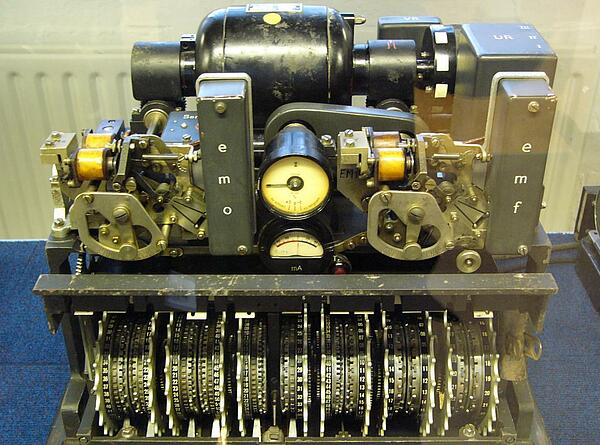The Lorenz SZ40
The Lorenz SZ40 was a cipher machine used by the German army during World War Two. The Enigma machine’s successor, the Lorenz was capable of far more complex encryption than its predecessor. It was built to allow Adolf Hitler and other senior officers to send highly secretive messages.
The Lorenz SZ40 had 12 internal rotas, making it more complex and powerful than Enigma. Hitler called it his “secrets writer”. He never found out that its code had been cracked by British intelligence.
In early 1941 codebreakers at Bletchley Park started to notice different signals on the lines sent from Nazi Germany which suggested that the enemy had developed a new coding machine. The codebreakers at Bletchley Park were tasked with cracking the code of the machine, which they called ‘Tunny’. Their breakthrough only came due to a human error.

A German operator had sent a coded message to Vienna, but the recipient had to ask for it to be resent. As he was retyping the message he used slightly different punctuation and abbreviation. These slight changes allowed the British to work out the message and crack the code.
The message was decoded by Colonel John Tiltman in only ten days. William Tutte then managed to use the decoded message to crack the code and work out how the Lorenz worked.
Tutte used his own formulas and intuition to work out that Tunny’s first wheel repeated itself after 41 strokes, concluding that Tunny had 41 spokes. With this information he could work out how many wheels it had.
Working out how Tunny worked gave the Allies a huge advantage as they were able to find out sensitive material concerning the Nazi’s strategy, including Hitler’s plans for D-Day.
See also: Bletchley Park
MLA Citation/Reference
"The Lorenz SZ40". HistoryLearning.com. 2026. Web.
